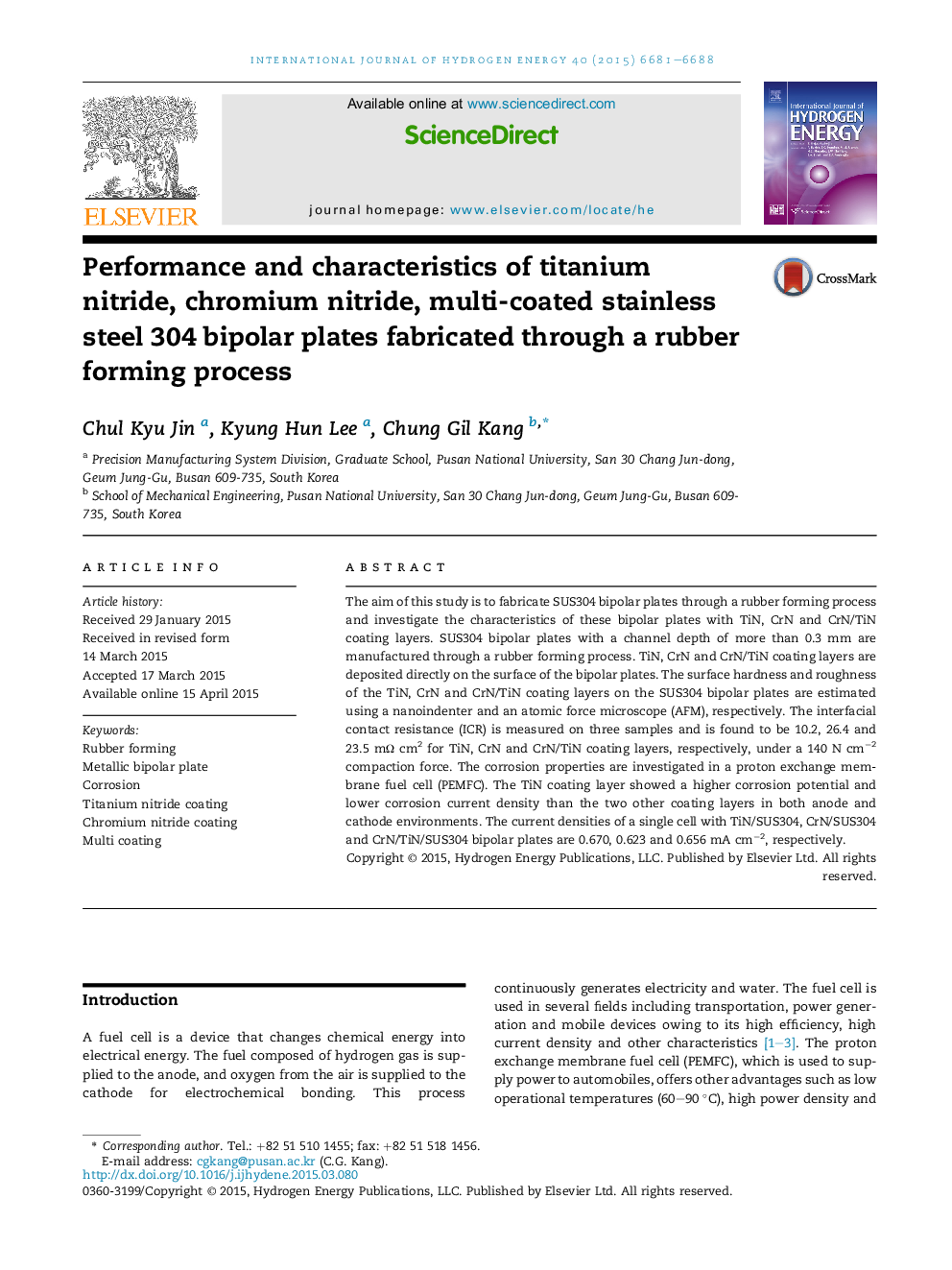| Article ID | Journal | Published Year | Pages | File Type |
|---|---|---|---|---|
| 1271464 | International Journal of Hydrogen Energy | 2015 | 8 Pages |
•SUS304 bipolar plates with 0.1 mm thickness and 0.3 mm channel depth were fabricated by rubber forming process.•The TiN coating layer had a higher strength and stability than CrN and CrN/TiN coating layer.•The TiN coating layer had a high electrical conductivity and low ICR values.•The TiN coating layer had the highest corrosion resistance and durability.•The TiN coating layer had the highest corrosion resistance, resulting in the highest current density of 0.67 A cm−2.
The aim of this study is to fabricate SUS304 bipolar plates through a rubber forming process and investigate the characteristics of these bipolar plates with TiN, CrN and CrN/TiN coating layers. SUS304 bipolar plates with a channel depth of more than 0.3 mm are manufactured through a rubber forming process. TiN, CrN and CrN/TiN coating layers are deposited directly on the surface of the bipolar plates. The surface hardness and roughness of the TiN, CrN and CrN/TiN coating layers on the SUS304 bipolar plates are estimated using a nanoindenter and an atomic force microscope (AFM), respectively. The interfacial contact resistance (ICR) is measured on three samples and is found to be 10.2, 26.4 and 23.5 mΩ cm2 for TiN, CrN and CrN/TiN coating layers, respectively, under a 140 N cm−2 compaction force. The corrosion properties are investigated in a proton exchange membrane fuel cell (PEMFC). The TiN coating layer showed a higher corrosion potential and lower corrosion current density than the two other coating layers in both anode and cathode environments. The current densities of a single cell with TiN/SUS304, CrN/SUS304 and CrN/TiN/SUS304 bipolar plates are 0.670, 0.623 and 0.656 mA cm−2, respectively.
